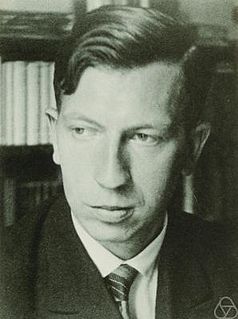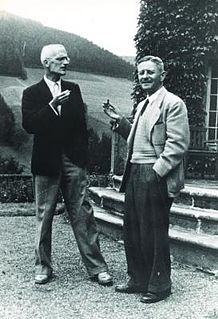
Differential geometry is a mathematical discipline that uses the techniques of differential calculus, integral calculus, linear algebra and multilinear algebra to study problems in geometry. The theory of plane and space curves and surfaces in the three-dimensional Euclidean space formed the basis for development of differential geometry during the 18th century and the 19th century.
In mathematics, a submersion is a differentiable map between differentiable manifolds whose differential is everywhere surjective. This is a basic concept in differential topology. The notion of a submersion is dual to the notion of an immersion.
In mathematics, combinatorial topology was an older name for algebraic topology, dating from the time when topological invariants of spaces were regarded as derived from combinatorial decompositions of spaces, such as decomposition into simplicial complexes. After the proof of the simplicial approximation theorem this approach provided rigour.
Digital geometry deals with discrete sets considered to be digitized models or images of objects of the 2D or 3D Euclidean space.

Discrete geometry and combinatorial geometry are branches of geometry that study combinatorial properties and constructive methods of discrete geometric objects. Most questions in discrete geometry involve finite or discrete sets of basic geometric objects, such as points, lines, planes, circles, spheres, polygons, and so forth. The subject focuses on the combinatorial properties of these objects, such as how they intersect one another, or how they may be arranged to cover a larger object.

Solid modeling is a consistent set of principles for mathematical and computer modeling of three-dimensional solids. Solid modeling is distinguished from related areas of geometric modeling and computer graphics by its emphasis on physical fidelity. Together, the principles of geometric and solid modeling form the foundation of 3D-computer-aided design and in general support the creation, exchange, visualization, animation, interrogation, and annotation of digital models of physical objects.

Herbert Karl Johannes Seifert was a German mathematician known for his work in topology.
Mesh generation is the practice of creating a mesh, a subdivision of a continuous geometric space into discrete geometric and topological cells. Often these cells form a simplicial complex. Usually the cells partition the geometric input domain. Mesh cells are used as discrete local approximations of the larger domain. Meshes are created by computer algorithms, often with human guidance through a GUI, depending on the complexity of the domain and the type of mesh desired. The goal is to create a mesh that accurately captures the input domain geometry, with high-quality (well-shaped) cells, and without so many cells as to make subsequent calculations intractable. The mesh should also be fine in areas that are important for the subsequent calculations.
In differential geometry, in the category of differentiable manifolds, a fibered manifold is a surjective submersion
Geometric modeling is a branch of applied mathematics and computational geometry that studies methods and algorithms for the mathematical description of shapes.
In complex geometry, a Hopf manifold is obtained as a quotient of the complex vector space (with zero deleted) by a free action of the group of integers, with the generator of acting by holomorphic contractions. Here, a holomorphic contraction is a map such that a sufficiently big iteration puts any given compact subset onto an arbitrarily small neighbourhood of 0.
In complex geometry, a Hopf surface is a compact complex surface obtained as a quotient of the complex vector space by a free action of a discrete group. If this group is the integers the Hopf surface is called primary, otherwise it is called secondary. The first example was found by Heinz Hopf (1948), with the discrete group isomorphic to the integers, with a generator acting on by multiplication by 2; this was the first example of a compact complex surface with no Kähler metric.

Computer graphics is a sub-field of Computer Science which studies methods for digitally synthesizing and manipulating visual content. Although the term often refers to the study of three-dimensional computer graphics, it also encompasses two-dimensional graphics and image processing.
This is a glossary of terms that are or have been considered areas of study in mathematics.
In mathematics, an abstract cell complex is an abstract set with Alexandrov topology in which a non-negative integer number called dimension is assigned to each point. The complex is called “abstract” since its points, which are called “cells”, are not subsets of a Hausdorff space as it is the case in Euclidean and CW complex. Abstract cell complexes play an important role in image analysis and computer graphics.
A mesh is a representation of a larger geometric domain by smaller discrete cells. Meshes are commonly used to compute solutions of partial differential equations and render computer graphics, and to analyze geographical and cartographic data. A mesh partitions space into elements over which the equations can be solved, which then approximates the solution over the larger domain. Element boundaries may be constrained to lie on internal or external boundaries within a model. Higher-quality (better-shaped) elements have better numerical properties, where what constitutes a "better" element depends on the general governing equations and the particular solution to the model instance.








